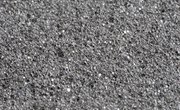
The smoke that wood releases as it burns is actually a mixture of many different types of gases, some harmless, but many harmful, especially if breathed in. The exact concentrations of each gas will depend on the type of wood and its condition. Dry, seasoned wood generally produces the least harmful smoke and the most heat. The more smoke that wood produces as it burns, the less heat it creates, so a small amount of smoke is desirable when burning wood.
TL;DR (Too Long; Didn't Read)
There are a mixture of gases omitted, made up of carbon dioxide, carbon monoxide, nitrogen oxide gases and volatile organic compounds, or VOCs
Particulate Matter
The visible smoke in the air is not a gas, but actually a collection of what is known as "particulate matter." These are small collections of materials that have not quite burned up or have burned into ash that is light enough to float up on the air. These tend to be bits of wood fiber, burnt wood ta, and other light deposits, usually less than 10 microns in width.
Carbon Dioxide
Carbon dioxide is the most common gas produced by burning wood. As an organic material, wood is largely carbon and when exposed to heat in the fire this carbon changes into carbon dioxide, the same gas that is produced when any type of biomass is burnt. Wood absorbs carbon dioxide through the air as it grows, changing it into carbon in its fibers. Burning the wood reverses this process, releasing about 1900g of CO2 for every 1000g of wood that is fully burnt.
COnsiderations
Carbon monoxide, or CO, is also released when wood is burnt, although in smaller quantities. This is another carbon gas, but it tends to be produced more often when the fire does not have much access to oxygen. It is odorless and colorless, and in large amounts can be more dangerous for humans than carbon dioxide.
NOx and VOCs
Wood also produces Oxides of Nitrogen (NOx) and Volatile Organic Compounds (VOCs) as it burns. NOx is an acidic compound that combines with water easily in the atmosphere, forming the infamous acid rain. Volatile Organic Compounds are evaporated carbon compounds that have a variety of unhealthy effects on human lungs, but they can also creates ozone when exposed to sunlight.
Water Vapor
Water vapor is also a very common type of gas emitted by wood when it is burnt, especially young wood that still has a lot of moisture trapped in its fibers. This water is heated by the fire until it evaporates along with tars and resins, floating away as water vapor. Although harmless on its own, this vapor can carry more dangerous particles from the smoke as it rises.
About the Author
Tyler Lacoma has worked as a writer and editor for several years after graduating from George Fox University with a degree in business management and writing/literature. He works on business and technology topics for clients such as Obsessable, EBSCO, Drop.io, The TAC Group, Anaxos, Dynamic Page Solutions and others, specializing in ecology, marketing and modern trends.
